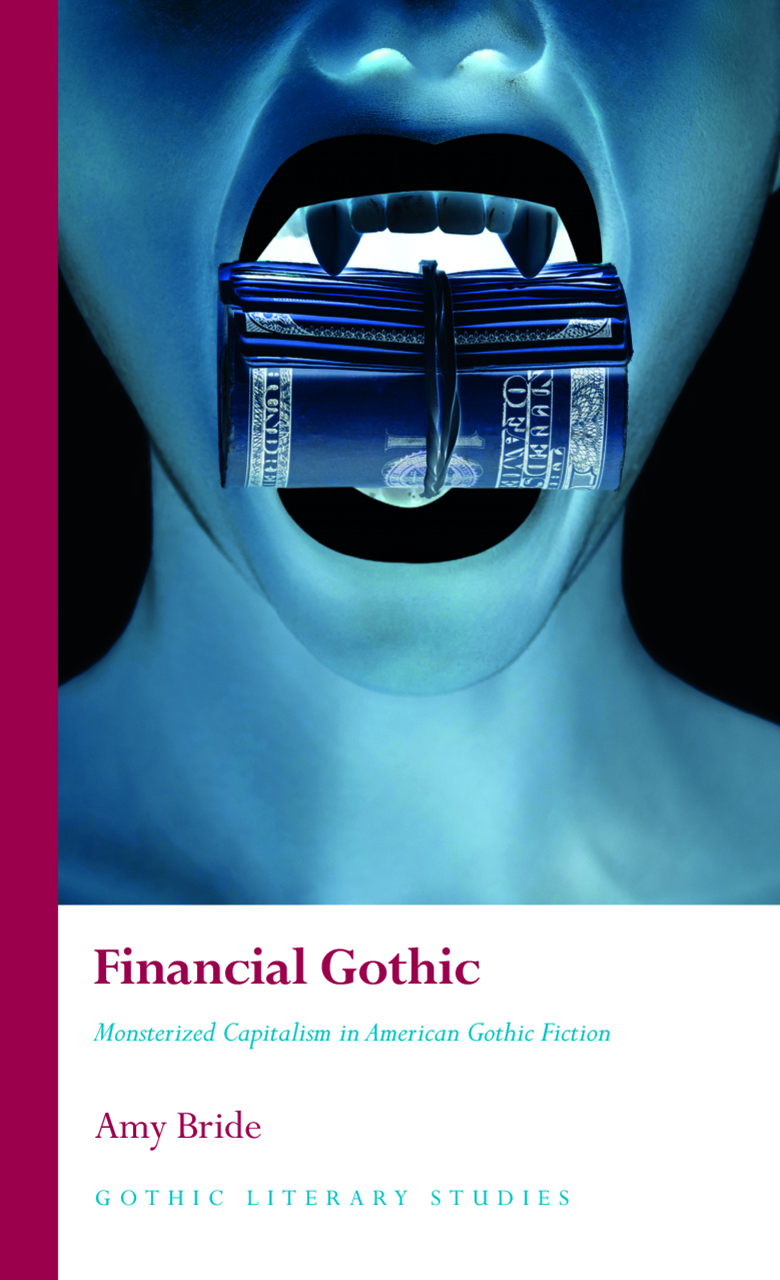Financial Gothic
Monsterized Capitalism in American Gothic Fiction
Awdur(on) Amy Bride
Iaith: Saesneg
Dosbarthiad(au): Literary Criticism
Cyfres: Gothic Literary Studies
- Hydref 2023 · 280 tudalen ·216x138mm
- · Clawr Caled - 9781837720637
- · eLyfr - pdf - 9781837720644
- · eLyfr - epub - 9781837720651
Am y llyfr
Financial Gothic explores the persistent concern of American Gothic literature with finance – and finance as having always been a gothic phenomenon – from 1880 to the present day. The study reads Frankensteinian monsters, haunted houses, vampires and zombies in American literature and film as cultural responses to such twentieth and twenty-first century financial phenomena as the 1929 Wall Street Crash, post-war housing debt, financial deregulation, and the 2008 Credit Crunch. Consideration is also given to the pre-existing consensus on racial readings of American gothic, and how these interpretations of the slave trade can be expanded upon in conversation with their financial contexts. Drawing on contemporary insights into financialised understandings of economics within the humanities, new analysis of finance as an inherently gothic phenomenon, and archival work completed on the Library of Congress’s Black History Collection, Financial Gothic highlights an as-yet-unrecognised dimension of haunting and monstrosity within American gothic fiction.
Dyfyniadau
‘This is a bold disinterment of the monstrosity that has long lain at the core of imaginative responses to money and markets in American culture. In Amy Bride’s incisive analysis, both American Gothic and American capitalism are revealed to be possessed by phantoms still stranger and more potent than we knew.’
Professor Paul Crosthwaite, University of Edinburgh
‘Financial Gothic persuasively highlights the immense – and often monstrous – role that anxieties related to finance have played in shaping the popular American Gothic between the early twentieth century and the present day.’
Dr Bernice M. Murphy, Trinity College, Dublin
‘This book is a credit to the Gothic’s aptness for denouncing social injustice. Taking stock of the mode’s investment in decrying capitalism’s structural inequalities, Bride argues for a broader consideration of the evolution of financial discourse in the American context as essentially monstrous. When money talks, the Gothic claps back.’
Dr Xavier Aldana Reyes, Manchester Metropolitan University
‘Financial Gothic provides a compelling analysis of how twentieth-century gothic literature is haunted by the twinned histories of finance and slavery. The shadow world of finance is often spectral, and Amy Bride demonstrates how American literature grapples with the problem of “zombie capitalism”.’
Peter Knight, Professor of American Studies, University of Manchester
‘Financial Gothic is a bold disinterment of the monstrosity that has long lain at the core of imaginative responses to money and markets in American culture. In Amy Bride’s incisive analysis, both American Gothic and American capitalism are revealed to be possessed by phantoms still stranger and more potent than we knew.’
Paul Crosthwaite, Professor of Modern and Contemporary Literature, University of Edinburgh
Cynnwys
Acknowledgements
List of Figures
Introduction: Gothic Finance and Financial Gothic
Chapter One: ‘It’s Alive!’: The 1929 Wall Street Crash and Pulp/Popular/Political Monsters
Chapter Two: ‘The Evil is the House Itself’: Credit, Citizenship, and the Postwar Haunting House
Chapter Three: Deregulation Sucks: Mass Consumption of Liquidity and the Deregulated Vampire
Chapter Four: ‘Myself is Fabricated, An Aberration’: Late-Capitalism and the Hyperreal Vampire
Chapter Five: Mindless Consumers: The 2008 Crash and the Post-Millennial Zombie
Conclusion: Monsterized Capitalism and Capitalist Monsters
Works Cited
Glossary of Financial Terms


